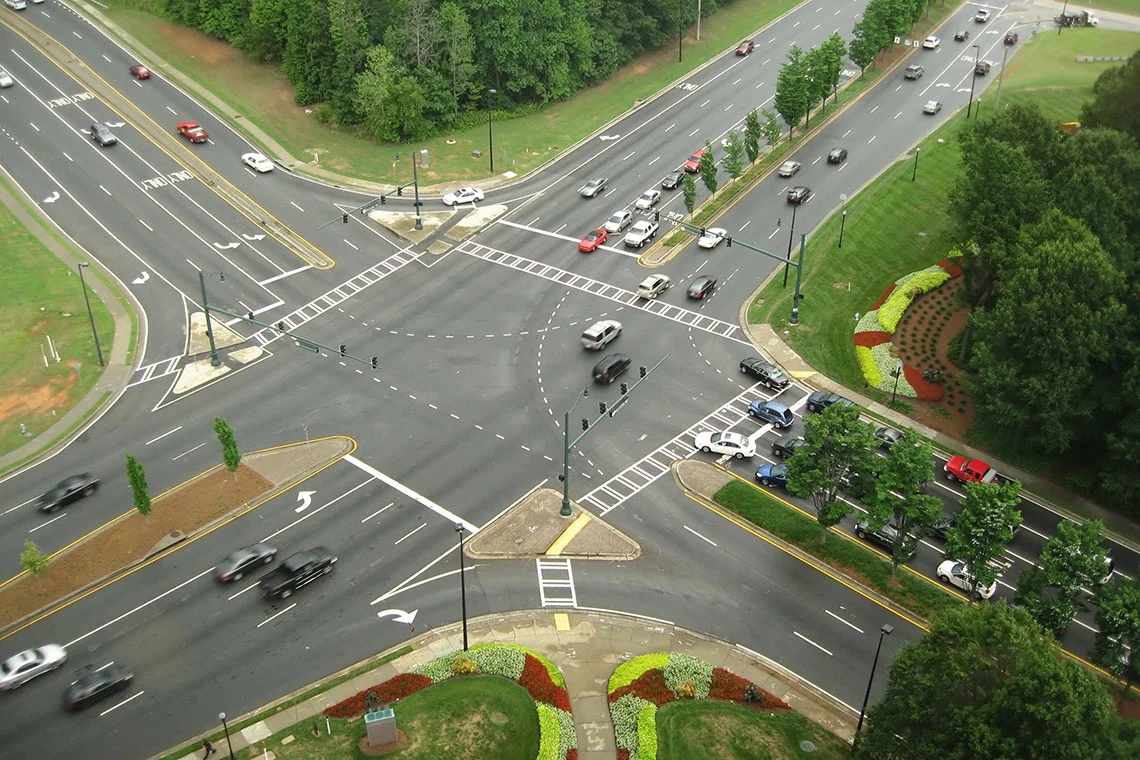Introduction to Continuous Flow Intersections (CFIs)
Imagine navigating a busy intersection where traffic flows smoothly, reducing wait times and improving safety. This innovative concept is the Continuous Flow Intersection (CFI). It’s not just a fancy term; it’s a game-changer for urban transportation.
In Virginia, the implementation of the Virginia Times Continuous Flow Intersection in 2014 marked a significant shift in how we approach road design. Gone are the days of lengthy red lights and congested streets. With CFIs, drivers experience an efficient and streamlined journey.
Curious about how this transformation came to be? Let’s dive into the world of CFIs, explore their incredible impact on Virginia’s roads, and discover what makes them such an essential part of modern traffic management.
The Need for CFIs in Virginia
Virginia’s roadways face increasing congestion. With population growth and urban development, traditional intersections struggle to handle the volume of traffic.
Safety is also a concern at these crossroads. High accident rates often stem from complex turns and signal waits. Drivers become frustrated, leading to risky maneuvers in an attempt to bypass delays.
Continuous Flow Intersections (CFIs) offer a solution by redesigning traffic flow. They allow left-turning vehicles to move freely without stopping on red lights. This innovation reduces waiting times significantly.
Moreover, CFIs improve pedestrian safety by streamlining vehicle movements. Fewer conflicts mean safer crossings for those on foot or bike.
Communities are beginning to realize that modern infrastructure can enhance both mobility and safety for all users of the road network in Virginia. Such changes are essential as we adapt our systems for future demands.
Implementation of the Virginia Times CFI in 2014
The Virginia Times Continuous Flow Intersection (CFI) debuted in 2014, marking a significant shift in traffic management. This innovative design aimed to alleviate congestion and improve safety at busy intersections.
Construction began with careful planning and community involvement. Engineers analyzed high-traffic areas, selecting a strategic location where traditional signals often failed to keep up with demand.
As the project unfolded, crews worked diligently to reconfigure lanes and install new signaling systems. The goal was clear: reduce delay time for vehicles turning left while maintaining smooth flow for through traffic.
Once operational, the CFI quickly showcased its potential. Drivers experienced an immediate reduction in wait times during peak hours. Feedback from local residents indicated greater satisfaction with their daily commutes as they adjusted to this unique intersection layout.
This implementation set the stage for future CFIs across Virginia, demonstrating how innovative designs could reshape traffic patterns effectively.
Benefits and Impact of the Virginia Times CFI
The Virginia Times Continuous Flow Intersection (CFI) has transformed traffic dynamics in the area. By allowing vehicles to bypass traditional turn signals, it reduces delays at busy intersections.
One of the primary benefits is improved traffic flow. Drivers experience less waiting time during peak hours, leading to a smoother travel experience. This efficiency helps alleviate congestion and minimizes frustration for commuters.
Safety is another significant advantage. Studies indicate that CFIs reduce potential conflict points between vehicles and pedestrians, lowering accident rates overall. The design encourages better visibility, giving drivers a clearer line of sight when navigating turns.
Environmental impacts are notable too. With reduced idling times, emissions decrease significantly, contributing to cleaner air quality in surrounding neighborhoods. Residents can breathe easier knowing their community’s environmental footprint is positively impacted by this innovative intersection design.
Economic activity often increases as well; businesses near the CFI benefit from higher foot traffic and accessibility for customers.
Success Stories and Statistics from the CFI
The Virginia Times Continuous Flow Intersection (CFI) has seen remarkable success since its implementation in 2014. Traffic flow has improved dramatically, with reports indicating a reduction in congestion by up to 30%.
Local commuters have expressed satisfaction, noting that travel times during peak hours have decreased significantly. This positive feedback reflects the effectiveness of CFIs in managing heavy traffic conditions.
Accident rates at the intersection also showcase noteworthy improvements. Studies reveal a drop of around 40% in collisions, enhancing safety for both drivers and pedestrians alike.
Moreover, emergency response times have benefited from the streamlined traffic patterns. Emergency vehicles can navigate through intersections more efficiently, ensuring quicker access to critical situations.
These statistics underscore how innovative design can transform urban landscapes. The Virginia Times CFI exemplifies successful infrastructure evolution aimed at bettering community life while addressing pressing transportation challenges.
Challenges and Criticisms of CFIs
While Continuous Flow Intersections (CFIs) offer innovative solutions, they are not without challenges. One significant concern is the learning curve for drivers unfamiliar with this design. Navigating a CFI can be confusing, leading to hesitance and potential safety risks.
Additionally, some critics argue that CFIs may increase congestion at certain times. During peak hours, the flow of traffic might not improve as expected. This can frustrate commuters who hope for smoother travel experiences.
Maintenance also poses a challenge. The unique configurations require ongoing attention to signage and road markings to ensure clarity for all users.
Public acceptance remains another hurdle. Some community members express skepticism about new traffic patterns and fear increased accidents despite evidence supporting CFIs’ safety benefits. For these reasons, continuous education and outreach are essential in addressing concerns around CFIs in Virginia.
Future of CFIs in Virginia and Beyond
The future of Continuous Flow Intersections (CFIs) in Virginia looks promising. As traffic congestion continues to rise, innovative solutions like CFIs will gain more traction. Their ability to streamline traffic flow makes them an attractive option for urban planners.
Beyond Virginia, other states are closely monitoring the success of CFIs. The positive outcomes seen at the Virginia Times CFI could inspire similar implementations nationwide.
Advancements in technology may enhance these intersections even further. Smart traffic signals and real-time data analytics could optimize vehicle movement and improve safety.
Public acceptance is crucial for expanding CFIs. Educating drivers about their benefits can alleviate concerns and encourage adaptability.
As cities evolve, so too will their infrastructure needs. CFIs represent a shift towards smarter transportation systems that prioritize efficiency and driver experience.
Conclusion
The Virginia Times Continuous Flow Intersection (CFI) implemented in 2014 marked a significant milestone for traffic management solutions in the state. As cities grapple with growing congestion, the CFI offers an innovative approach to enhance flow and safety at busy intersections.
This design showcases how strategic engineering can transform urban mobility. The benefits observed since its inception demonstrate the potential of CFIs to alleviate common traffic woes while improving overall travel experiences.
With ongoing advancements in transportation infrastructure, it’s clear that CFIs could play a vital role in shaping future road networks across Virginia and beyond. Their continued adoption may offer critical insights into creating safer, more efficient roadway systems as we move forward.







![Ta11672 ssy to Auto Connect: A Comprehensive Tutorial [2024]](https://dgpedia.com/wp-content/uploads/2024/09/ta11672-ssy-to-auto-connect.jpg)